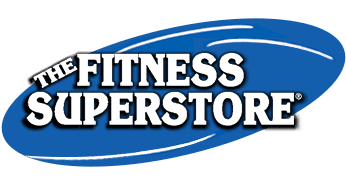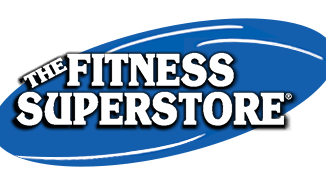When it comes to achieving fitness goals, gym safety tips are essential, whether you’re working out at a commercial gym or setting up a fitness routine in your own home. Exercising safely can prevent injuries and enhance the effectiveness of your workout. With more people in Albuquerque and El Paso building their own home gyms, it’s important to keep gym safety in mind. Here are some tips to ensure you stay safe and make the most out of your fitness routine, whether you’re lifting weights, running on a treadmill, or engaging in bodyweight exercises.
Practice Safety at the Gym… In Your Own Home
Many people overlook safety when working out at home, but it’s just as important as safety at the gym. Having a home gym setup can be convenient, but without the proper precautions, it can lead to injuries. Here are a few gym safety tips to keep in mind for your home workouts:
- Use Proper Equipment: Invest in high-quality fitness equipment from trusted brands like those at The Fitness Superstore. Make sure all equipment is stable and in good working condition.
- Clear Your Space: Ensure that your workout area is free from clutter. A clean, organized space allows for better movement and reduces the risk of tripping over obstacles.
- Warm-Up: Always begin with a warm-up to prepare your body for more intense activity. A proper warm-up helps prevent strains and injuries during your workout. Your warm-up may vary depending on the types of exercises you’ll be performing on a given day.
- Focus on Form: Pay attention to your form, especially when lifting weights or using machines. Incorrect form can lead to overuse injuries, particularly in the back, knees, and shoulders.
By following these gym safety tips, you can ensure that your home workout environment is both effective and injury-free.
Essential Warm-Up and Stretch Routine for Home Workouts
One of the most important gym safety tips is to never skip your warm-up and stretch routine. Warming up prepares your muscles and joints for physical activity, reduces the risk of injuries, and increases the effectiveness of your workout. Here’s how to incorporate a solid warm-up and stretch routine into your home workout:
- Cardio Warm-Up: Start with 5–10 minutes of light cardio, such as jogging in place, jumping jacks, or using a treadmill. This increases your heart rate and blood flow to muscles.
- Dynamic Stretching: Perform dynamic stretches like leg swings, arm circles, and torso twists to loosen up the major muscle groups. These stretches involve movement, which helps prepare your muscles for the demands of exercise. The ‘world’s greatest stretch’ is also a great dynamic move that targets multiple muscle groups and joints.
- Joint Rotations: Move your joints through their full range of motion to prevent stiffness. Try shoulder rolls, wrist circles, and ankle rotations. You can go further by incorporating a pole into your stretches. Poles/rods are great for shoulder mobility exercises.
Once you’ve completed your warm-up and workout, try incorporating static stretches to cool down afterward. Foam rolling or light cardio, such as walking on an incline for 5-10 minutes, are other great cool-down options. These can help reduce muscle tightness or soreness and promote flexibility.
A good warm-up and stretch routine is the foundation of any injury-free workout, especially in a home gym setting.
How To Get a Spotter at the Gym
If you’re working with heavy weights, having a spotter is crucial for gym safety. A spotter helps ensure that you lift safely and can assist if you run into trouble. But how do you get a spotter at the gym, especially if you’re working out in a home gym without a workout partner?
- Ask a Friend or Family Member: If you have a trusted friend or family member at home, ask them to spot you during exercises like bench presses or squats. They don’t need to be fitness experts but should be aware of how to assist safely.
- Use Safety Features on Equipment: If a physical person isn’t an option for you, many machines, especially free-weight stations like squat racks and bench presses, typically have built-in safety bars or pins. These features can help prevent injury in case you fail a lift.
- Join Fitness Classes: If you prefer to work out at a gym, consider taking group fitness classes where a trainer or instructor can spot you during weightlifting exercises.
In the absence of a spotter, always remember to use gym safety tips like lighter weights, gradual progression, and safety mechanisms on machines to ensure you’re lifting safely. If you want to fatigue a certain muscle group without taking the risk of adding too much weight, opt for performing more reps, incorporating drop sets, or supersetting exercises. These options will ensure you’re still pushing yourself without putting yourself in danger of failing a lift without a spotter’s help.
Why Is It Important To Stay Hydrated During Exercise?
Why is it important to stay hydrated during exercise? Hydration is one of the most overlooked but essential aspects of gym safety. When you exercise, your body loses fluids through sweat, which can lead to dehydration if not replaced. Dehydration can cause fatigue, muscle cramps, dizziness, and, in severe cases, heat exhaustion. Here’s why staying hydrated is critical during your workouts:
- Regulates Body Temperature: Proper hydration helps regulate your body temperature, preventing overheating during intense exercises.
- Prevents Muscle Cramps: Dehydration can cause your muscles to cramp. Drinking enough water ensures that your muscles have the fluid they need to function properly.
- Boosts Performance: Staying hydrated improves endurance and strength during workouts, leading to better performance and results.
- Supports Recovery: After your workout, hydration helps to flush out toxins and supports muscle recovery.
Remember to drink water before, during, and after your workout. For long or intense sessions, you may also want to consider an electrolyte drink to replenish lost minerals.
If you’re looking for home gym exercise equipment in Albuquerque or El Paso, The Fitness Superstore can help you find the best equipment for your needs. As a leading fitness equipment store, all our equipment is backed by our expert advice and 30-day in-home trial policy.
Visit us today to explore our wide selection of fitness machines and accessories and ensure your home gym is set up for success! Contact The Fitness Superstore for more information today.







